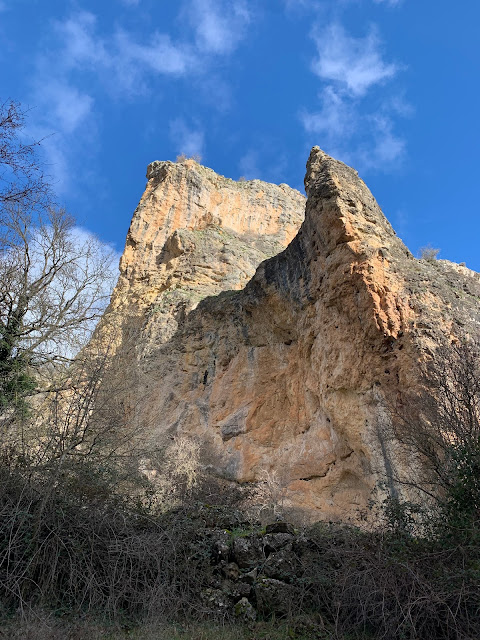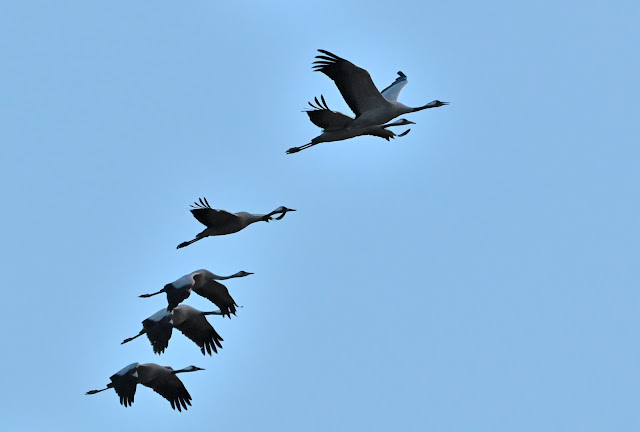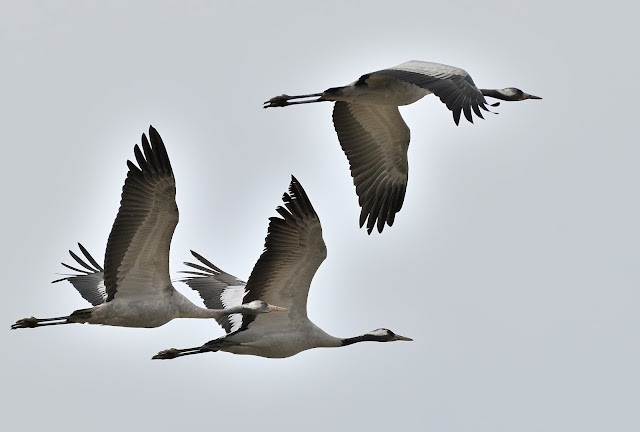Hola una vez más.
Hi again.
Hi again.
En el siguiente enlace podéis ver nuestros próximos viajes fotográficos y de observación de aves y mamíferos nacionales y al extranjero. Espero que os gusten y os animéis a venir conmigo. Una experiencia que nunca olvidareis.
In the following link you can see our next national and foreign Birds and Mammals photographic and observation trips. I hope you like them and I encourage you to come with me. An experience that you will not forget.
En esta ocasión os muestro lo que pude fotografiar en el viaje que hicimos a las hoces del río Dulce y la laguna de Gallocanta del 24 al 25 de febrero.
This time I show you what I was able to photograph on the trip we made to the Gorges of the Dulce River and the Gallocanta Lagoon from February 24 to 25.
El tiempo fue muy malo pues hacía muchísimo viento y estuvo muy nublado dutante los dos días aunque, gracias a Dios, no llovió.
The weather was very bad because it was very windy and very cloudy both days although, thank God, it did not rain.
SÁBADO 24 DE FEBRERO:
SATURDAY, FEBRUARY 24.
SATURDAY, FEBRUARY 24.
Como saliendo desde Madrid no nos da tiempo para llegar a ver la salida de las grullas comunes (Grus grus), normalmente divido el viaje en dos etapas para llegar a la Laguna de Gallocanta sobre las 3 de la tarde que es cuando más grullas pueden llegar en migración. En la foto el pueblo de Pelegrina con su castillo al fondo.
Since leaving from Madrid does not give us time to see the departure of the Common Cranes in migration, I normally divide the trip into two stages to arrive at the Gallocanta Lagoon around 3 in the afternoon, which is when there are the most cranes. They can arrive in migration. In the photo the town of Pelegrina with its castle in the background.
El recorrido que hicimos por el cañón fue desde el pueblo de Peregrina.
We took the tour through the canyon from the town of Peregrina.
Vimos varias especies de paseriformes pero el más destacado fue este chochín paleártico (Troglodytes
troglodytes) que posó para nuestras cámaras.
We saw several species of passerines but the most notable was this Eurasian Wren that posed for our cameras.
También había algunas grajillas occidentales (Corvus
monedula) como la de la foto y algunas chovas piquirrojas (Pyrrhocorax
pyrrhocorax) que no tuve oportunidad de fotografiar.
There were also some Eurasian
Jackdaw like the one in the photo and some Red-billed
Chough that I didn't have a chance to photograph.
El paseo por el cañón es muy cómodo y bonito. Me extrañó ver que había bastante gente a pesar del mal tiempo que hacía.
The walk through the canyon is very comfortable and beautiful. I was surprised to see that there were quite a few people despite the bad weather.
El río Dulce llevaba más agua que en otros años que yo he ido.
The River Dulce had more water than in other years that I have been.
Muy bonito el recorrido.
The route is very nice.
Antes de abandonar la zona, hicimos una parada en el mirador de Félix Rodríguez de la Fuente. Fue una pena que no sacase la máquina de fotos de la furgoneta pues varios buitres leonados (Gyps
fulvus), de los muchos que habitan en él, hicieron unas pasadas espectaculares y muy cerca del mirador. Al fondo se podía ver la Cascada del Gollorio que tenia bastante agua.
Before leaving the area, we made a stop at the Félix Rodríguez de la Fuente viewpoint. It was a shame that I didn't take the camera out of the van because several Griffon Vultures, of the many that live there, made some spectacular passes very close to the viewpoint. In the background you could see the Gollorio Waterfall, which had a lot of water.
El cañón visto desde el mirador en dirección a Pelegrina.
The canyon seen from the viewpoint towards Pelegrina.
Sobre las 4 de la tarde llegamos a la Laguna de Gallocanta.
Around 4 in the afternoon we arrived at the Gallocanta Lagoon.
Había muchas grullas comunes (Grus grus) por los campos que rodean la laguna.
There were many Common Cranes in the fields surrounding the lagoon.
Muy pocas grullas llegaban del sur en migración. Debió de ser el mal tiempo reinante pues el viento llagaba a los 40 km/hora. En esos días con tiempo adverso las grullas no migran para no gastar mucha energía en los trayectos.
Very few Common Cranes came from the south on migration. It must have been the bad weather because the wind was blowing at 40 km/hour. On those days with adverse weather, Common Cranes do not migrate so as not to spend a lot of energy traveling.
El censo del gobierno de Aragón del 22 de febrero contabilizo casi 27.000 grullas comunes (Grus grus) en la laguna. Una cifra muy baja para esta época del año. El año pasado el censo semanal hecho el día 23 de febrero contabilizo más de 128.000.
The census of the Aragon government on February 22 counted almost 27,000 Common Cranes in the lagoon. A very low figure for this time of year. Last year the weekly census taken on February 23 counted more than 128,000.
De cualquier modo, había muchísimas.
In any case, there were many.
Como ese día no había habido migración, muchas grullas vinieron al atardecer desde los campos para pasar la noche en la laguna.
Since there had been no migration that day, many Common Cranes came from the fields at dusk to spend the night at teh lagoon.
Pasamos unos momentos inolvidables viendo como llegaban alborotando a la laguna.
We spent some unforgettable moments watching how they arrived rioting at the lagoon.
Aún se podían distinguir las llamadas de los adultos de la de los juveniles.
Calls of the adults could still be distinguished from those of the juveniles.
Fueron muchos grupos los que nos sobrevolaron.
There were many flocks flaying over us.
Al final dejé la cámara para poder disfrutar más del maravilloso espectáculo.
In the end I left the camera to be able to enjoy the wonderful spectacle.
DOMINGO 25 DE FEBRERO:
SUNDAY, FEBRUARY 25:
Hoy nos tocaba madrugar pues las grullas comunes (Grus grus) empiezan a ir a los campos para alimentarse muy pronto. A las 7:00 ya estábamos metidos en la furgoneta en dirección del observatorio de la Ermita de Nuestra Señora del Buen Acuerdo.
Today we had to get up early because the common cranes (Grus grus) begin to go to the fields to feed very early. At 7:00 we were already in the van heading towards the observatory of the Hermitage de Nuestra Señora del Buen Acuerdo.
Hasta las 8.00 de la mañana no empecé a tomar fotografías pues no había luz al estar muy nuboso.
I didn't start taking photographs until 8:00 in the morning because there was no light as it was very cloudy.
Miles pasaron cerca de donde estábamos en dirección a los campos.
Thousands passed by where we were heading towards fields.
Es una pena que no se pueda reproducir mejor esos momentos, Además de ver tantas, el ruido que meten es maravilloso. Un espectáculo de luz y de sonido.
It's a shame that those moments can't be reproduced better. In addition to seeing so many, the noise they make is wonderful. A light and sound show.
La ermita.
The Hermitage.
Sobre las 9 volvimos al hotel para recoger las maletas y desayunar. Luego nos fuimos a los campos para verlas de cerca como se alimentaban.
Around 9 we returned to the hotel to collect our suitcases and have breakfast. Then we went to the fields to see them up close as they fed.
En un sembrado cerca de la carretera había una pareja con un juvenil y otro ejemplar aislado. Este era el ejemplar aislado.
In a field near the road there was a couple with a juvenile and another isolated specimen. This was the isolated specimen.
El juvenil.
The juvenile.
Y la pareja.
And the pair.
Nuevamente el ejemplar aislado.
Again the isolated specimen.
Al poco rato un tractor pasó cerca de donde estaban alimentándose y espantó a los cuatro.
Soon a tractor passed near where they were feeding and scared the four away.
Luego llegamos a otro sembrado donde había mucha concentración de grullas. Iban saliendo poco a poco hacia la laguna después de alimentarse.
Then we arrived at another field where there was a large concentration of cranes. They were leaving little by little towards the lagoon after feeding.
En esta foto una pareja con su cría del año pasado, la que va detrás. Tanto en la migración postnupcial como la prenupcial, los padres guían a sus crías, 1 o máximo dos, y así aprenden las rutas para los años sucesivos. No se separarán hasta que alcancen sus lugar de cría.
In this photo a couple with their chick from last year, the one behind. In both post-nuptial and pre-nuptial migration, parents guide their young, 1 or at most two, and thus learn the routes for subsequent years. They will not separate until they reach their breeding places.
Esta pareja iba acompañada por dos juveniles.
This couple was accompanied by two juveniles.
Esta día si vimos como la inmensa mayoría de grullas continuaban su camino en dirección norte.
This day we did see how the vast majority of Common Cranes continued on their way north.
En los campos se veían bastantes alondras comunes (Alauda
arvensis) y calandrias comunes (Melanocorypha
calandra). En la foto la primer especie mencionada que no se como se podía mantener cantando en vuelo con el fuerte viento reinante.
In the fields there were quite a few Eurasian Skylark and Calandra
Lark. In the photo, the first species mentioned that I don't know how it could keep singing in flight with the strong prevailing wind.
Algunas fotos más que pude sacar en este sitio.
Some more photos that I was able to take on this place.
Después, nos fuimos hasta el observatorio de Los Agunares a continuar viendo como venías a beber al medio día las grullas comunes (Grus grus).
Afterwards, we went to the Los Agunares observatory to continue watching the Common Cranes come to drink at noon.
Había también tres cigüeñas blancas (Ciconia
ciconia) intentando que no se las llevase el viento. Como podéis ver, la laguna tenia muy poca agua y las aves que había estaban demasiado alejadas de los puntos de observación como para sacarles fotos.
There were also three white Storks Trying not to be blown away by the wind. As you can see, the lagoon had very little water and the Birds that were there were too far from the observation points to take photos.
Muchas se marchaban después de beber para continuar con la migración.
Many left after drinking to continue their migration.
Y otras llegaban a beber.
And others came to drink.
Vista de la laguna desde la Ermita de Nuestra Señora del Buen Acuerdo donde comimos. Después, recorrimos varios sendero en espera de ver si llegaban grullas en migración pero solo vimos tres bandos y no muy numerosos por lo que decidimos volvernos a Madrid pues habían quedado pocas en la laguna y alrededores.
View of the lagoon from the Hermitage de Nuestra Señora del Buen Acuerdo where we had lunch. Afterwards, we walked several paths waiting to see if migrating cranes would arrive, but we only saw three flocks and they were not very numerous, so we decided to return to Madrid since there were few left in the lagoon and surrounding areas.
Si queréis suscribiros a este blog de los viajes que hacemos pincha en el siguiente enlace: Suscribirse y haz clic en ¿ Quieres suscribirte a nuestro blog?
If you want to subscribe to this post about the trips we do, click on the following link: Susbcribe and click on: Do you want to subscribe to our blog?
Espero que os haya gustado y hasta pronto.
I hope you like it and see you soon.





























































Gracias Luis. Impresionante concentración de Grulla común. ¡Un espectáculo!
ResponderEliminarMuchas gracias Alejandro.
EliminarLa verdad es que lo disfrutamos mucho.
Un abrazo,
Luis